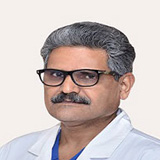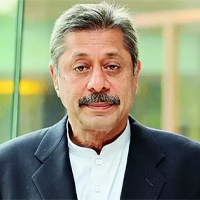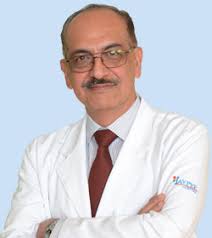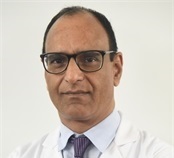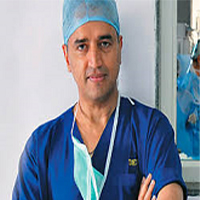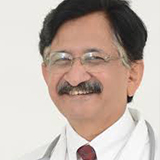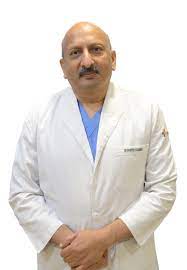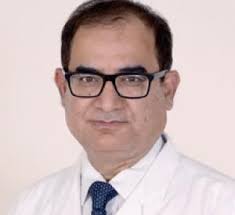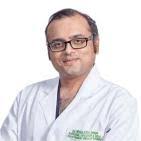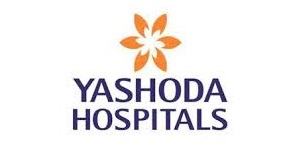Bypass Surgery IN INDIA
Coronary Artery Bypass Surgery (CABG), commonly referred to as bypass surgery, is one of the most critical surgical procedures in modern medicine. It is performed to restore adequate blood flow to the heart in patients suffering from severe coronary artery disease (CAD). This intricate procedure has proven to be a life-saver for millions globally, significantly improving their quality of life.
India has gained worldwide recognition as a leading destination for CABG. The country offers a perfect blend of advanced medical technology, highly experienced surgeons, and affordable care, making it an attractive option for both domestic and international patients. This article takes an in-depth look at coronary artery bypass surgery, its significance, costs, preparation, and recovery, and highlights why AL Afiya MediTour is the ideal choice for those seeking the best healthcare services in India.
What is Coronary Artery Bypass Surgery (CABG)?
Coronary Artery Bypass Surgery is a surgical procedure designed to improve blood flow to the heart muscle. Over time, the coronary arteries, which supply oxygen and nutrients to the heart, can become blocked or narrowed due to plaque buildup—a condition known as atherosclerosis. This restricts blood flow, leading to chest pain (angina), shortness of breath, and an increased risk of heart attack.
During CABG, a surgeon uses a healthy blood vessel taken from another part of the patient’s body—commonly the leg, arm, or chest—to create a bypass around the blocked section of the artery. This rerouting restores normal blood flow, relieving symptoms and preventing serious complications.
Global and Indian Statistics on CABG
The increasing prevalence of coronary artery disease has made CABG one of the most common cardiac surgeries worldwide.
Global Insights
- Coronary artery disease (CAD) is the leading cause of death globally, responsible for nearly 18 million deaths annually.
- CABG remains a primary treatment for CAD, with over 400,000 surgeries performed annually in the USA alone.
India’s Role
- India performs over 60,000 CABG procedures annually, with success rates exceeding 98%.
- Nearly 15% of patients undergoing CABG in India are international medical tourists, making India a top choice for cardiac care.
- The cost of CABG in India is up to 80% lower than in developed countries, with no compromise on quality.
India’s high success rate, coupled with its affordability, has made it a leading destination for heart patients worldwide.
Why is Coronary Artery Bypass Surgery Necessary?
CABG is recommended for individuals with significant blockages in their coronary arteries, which cannot be treated effectively with lifestyle changes, medications, or less invasive procedures like angioplasty.
Medical Conditions Requiring CABG
- Severe Coronary Artery Disease: When arteries are severely narrowed or blocked by plaque, CABG is the most effective treatment.
- Multiple Artery Blockages: For patients with multi-vessel disease (blockages in multiple arteries), CABG provides better outcomes compared to other treatments.
- Recurrent Angina or Heart Attacks: If chest pain persists or a patient has experienced multiple heart attacks, CABG can restore normal heart function.
- Failed Angioplasty or Stenting: If previous treatments like angioplasty or stent placement have failed, CABG may be the only option.
Benefits of CABG
- Symptom Relief: CABG alleviates chest pain, fatigue, and shortness of breath, significantly improving quality of life.
- Prevention of Heart Attacks: By restoring blood flow, CABG reduces the risk of life-threatening heart attacks.
- Improved Heart Function: The surgery ensures adequate oxygen supply to the heart, enhancing its efficiency.
- Extended Life Expectancy: CABG has been shown to increase survival rates in patients with severe CAD.
What is the Cost of Coronary Artery Bypass Surgery in India?
The cost of CABG in India varies depending on the hospital, surgeon’s expertise, and additional services. Here is a detailed breakdown of costs in Indian Rupees (INR) and US Dollars (USD).
| Hospital Category | Cost (INR) | Cost (USD) |
| Government Hospitals | ₹1,50,000 – ₹2,50,000 | $1,800 – $3,000 |
| Private Multi-specialty Hospitals | ₹3,00,000 – ₹5,00,000 | $3,600 – $6,000 |
| Premium Hospitals (e.g., Fortis, Apollo) | ₹5,00,000 – ₹7,00,000 | $6,000 – $8,500 |
Cost Comparison: India vs. Other Countries
India offers CABG at significantly lower costs than Western and other developed nations while maintaining comparable quality of care. Below is a cost comparison between India and other countries:
| Country | Average Cost of CABG (USD) |
| India | $4,000 – $7,000 |
| United States | $40,000 – $60,000 |
| United Kingdom | $20,000 – $30,000 |
| Australia | $22,000 – $35,000 |
| Singapore | $18,000 – $25,000 |
| Germany | $25,000 – $40,000 |
Key Observations from the Comparison
- Cost Savings in India:
-
-
- The cost of CABG in India is 70%-90% lower than in Western countries like the USA or the UK.
- For example, a patient would pay $40,000 – $60,000 in the USA but only $4,000 – $7,000 in India.
-
- Comparable Quality:
-
-
- Despite lower costs, the quality of healthcare in India is on par with international standards. Indian hospitals boast state-of-the-art technology, skilled surgeons, and high success rates (above 98%).
-
- Affordability with Custom Packages:
-
-
- Medical tourists in India can also benefit from customized packages that include surgery, accommodation, and post-operative care, making the overall experience more cost-effective.
-
- Accessibility:
-
- While countries like the USA or the UK have long waiting periods for elective surgeries, India offers immediate scheduling for international patients, ensuring timely intervention.
What are the Factors Influencing Costs of CABG in India?
- Type of Hospital: Premium hospitals with advanced facilities may charge higher fees.
- Surgeon Expertise: Experienced surgeons often command a premium for their services.
- Medical Tourism Packages: Comprehensive packages that include travel, accommodation, and post-surgery care can affect overall costs.
Despite these variables, CABG in India remains significantly more affordable than in most countries, without compromising on quality.
Why Choose India for CABG?
India has earned a reputation as a global hub for cardiac care due to several advantages:
- Highly Skilled Surgeons: Indian cardiac surgeons are internationally trained and renowned for their expertise.
- World-Class Infrastructure: Hospitals in India are equipped with the latest technologies, including robotic-assisted surgery.
- Affordable Costs: Patients can save up to 80% on medical expenses compared to Western countries.
Comprehensive Medical Tourism Services: India offers seamless care, including visa assistance, travel arrangements, and follow-up care.
Why Choose AL Afiya MediTour?
AL Afiya MediTour is a trusted name in medical tourism, offering end-to-end healthcare solutions for international patients.
What Makes AL Afiya MediTour Stand Out?
- Seamless Coordination: Handles all aspects of the patient’s journey, from visa processing to hospital bookings.
- Top Hospital Partnerships: Collaborates with India’s leading cardiac care centers.
- 24/7 Support: Dedicated team to assist patients at every step.
Affordable Packages: Customizable to meet the needs of individual patients.
What should be the Pre-operative Care for CABG?
Successful CABG requires thorough preparation to ensure the patient is in optimal health before undergoing surgery.
Medical Evaluations
- Electrocardiogram (ECG): To assess the electrical activity of the heart.
- Angiography: A detailed imaging test to locate blockages in coronary arteries.
- Blood Tests: To check for infections and evaluate overall health.
- Stress Tests: To measure heart function under physical activity.
Lifestyle Adjustments
- Quit Smoking and Alcohol: To promote better healing and reduce surgical risks.
- Heart-Healthy Diet: Focus on nutrient-rich foods, including fruits, vegetables, and lean proteins.
- Medication Review: Some medications, especially blood thinners, may need to be stopped or adjusted.
Emotional Preparation
CABG can be a stressful experience. Counseling and support from family members can help patients approach the surgery with confidence.
What are the Procedure of Coronary Artery Bypass Surgery?
CABG is a meticulous and highly skilled procedure performed under general anesthesia. The process involves several critical steps:
- Administering Anesthesia: The patient is made unconscious to ensure a pain-free experience.
- Chest Incision: The surgeon makes a sternotomy (incision in the chest) to access the heart.
- Harvesting Grafts: A healthy blood vessel is taken from another part of the body, such as the leg (saphenous vein) or chest (internal mammary artery).
- Bypassing the Blockage: The graft is attached above and below the blocked artery, creating a new pathway for blood flow.
- Restarting the Heart: If the heart was temporarily stopped during the procedure, it is restarted using advanced techniques.
- Closing the Incision: The chest is sutured, and the patient is transferred to intensive care for monitoring.
What should be the Post-operative Care for CABG?
Recovery after CABG is a gradual process, requiring patience and adherence to medical advice.
- Hospital Stay: Patients typically stay in the hospital for 5-7 days after surgery, during which their vital signs and heart function are closely monitored.
- Cardiac Rehabilitation Programs: Include supervised exercise, dietary guidance, and stress management to restore heart health.
- Physical Therapy: Helps patients regain strength and mobility over time.
-
- Lifestyle Changes
- Heart-Healthy Diet: Patients are encouraged to consume low-fat, low-sodium meals to prevent further blockages.
- Regular Exercise: Light activities, such as walking, are gradually introduced.
Stress Management: Techniques like meditation or yoga are recommended to improve mental well-being.
Top Bypass Surgery Doctors in India
The right doctor to consult for a Bypass Surgery case.
Dr. Y K Mishra
Year of experience: 32 years of experience
Dr.Naresh Trehan
Year of experience: 40 years of experience
Dr. Murtaza Ahmed Chishti
Year of experience: 34 years of experience
Dr. Ashok Seth
Year of experience: 40
Senior Consultant at Fortis Escorts Heart Institute, Delhi
Dr. Atul Mathur
Year of experience: 41
Executive Director and Senior Consultant at Fortis Escorts Heart Institute, Delhi
Dr. D.K. Jhamb
Year of experience: 29
Director and Senior Consultant at Shalby Sanar International Hospital, Gurgaon, India
Dr. Ganesh K. Mani
Year of experience: 37 Years of Experience
Dr. K. K. Saxena
Year of experience: 44
Consultant at Indraprastha Apollo Hospital, Delhi
Dr. Mahesh Chandra Garg
Year of experience: 49 Years of Experience
Dr. Nikhil Kumar
Year of experience: 42
Senior Consultant at Fortis Memorial Research Institute, Gurgaon
Dr. Praveen Chandra
Year of experience: 37+ Years of Experience
Dr. Rajneesh Malhotra
Year of experience: 31+ Years of Experience
Dr. Sandeep Attawar
Year of experience: 22 years of experience
Dr. Sanjeev Chaudhary
Year of experience: 30
Chairman and Senior Consultant at Marengo Asia Hospitals Formerly W Pratiksha Hospital, Gurgaon
Dr. T. S. Kler
Year of experience: 48
Senior Consultant at BLK Super Speciality Hospital
Dr. Udgeath Dhir
Year of experience: 18+ Years of Experience
Leading Hospitals for Bypass Surgery in India


Looking For The Best Doctor & Hospital?
Fill up the form and get assured assitance within 24 hrs!
FAQs
- . What is Coronary Artery Bypass Surgery (CABG)?
CABG is a surgical procedure that improves blood flow to the heart by creating a bypass around blocked coronary arteries using a healthy blood vessel from another part of the body.
- Why is CABG performed?
CABG is performed to treat severe coronary artery disease (CAD), relieve symptoms like chest pain, and reduce the risk of heart attacks and other complications.
- How much does CABG cost in India?
The cost of CABG in India ranges from ₹1,50,000 to ₹7,00,000 ($1,800 to $8,500) depending on the hospital and surgeon’s expertise.
- What is the success rate of CABG in India?
India has a CABG success rate of over 98%, thanks to advanced medical technology and experienced cardiac surgeons.
- How long is the recovery period after CABG?
Full recovery after CABG typically takes 8-12 weeks, though light activities can resume within 4-6 weeks.
- Are international patients choosing India for CABG?
Yes, India is a preferred destination for medical tourists due to affordable costs, advanced healthcare facilities, and high success rates.
- What are the risks associated with CABG?
Although rare, risks include infection, blood clots, or adverse reactions to anesthesia. Choosing an experienced surgeon and reputable hospital minimizes these risks.
- Can CABG be avoided?
In some cases, lifestyle changes, medications, or less invasive procedures like angioplasty may be sufficient. However, severe cases often require CABG.
- How is CABG different from angioplasty?
While angioplasty involves opening the blocked artery with a stent, CABG reroutes blood flow around the blockage using a graft. CABG is preferred for severe or multi-vessel disease.
- Why should I choose AL Afiya MediTour for CABG in India?
AL Afiya MediTour offers seamless medical tourism services, partnering with top hospitals and expert surgeons, and provides 24/7 support, making your healthcare journey stress-free.
- How do I prepare for CABG surgery in India?
Preparation includes medical evaluations (e.g., ECG, angiography), stopping certain medications like blood thinners, adopting a heart-healthy diet, and emotional counseling.
Get FREE Evaluation
Treatment plan and quote within within 24 hrs!
Let us help you
Get your personalized Estimate Now
Top Doctors & Surgeons in India
Best Hospitals in India
Best Treatments in India
Indian Medical Visa From
Copyright © 2025 Al Afiya Medi Tour | All Rights Reserved.

